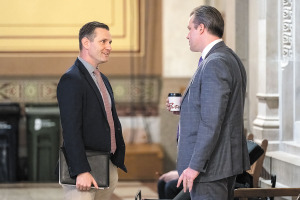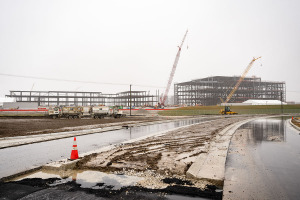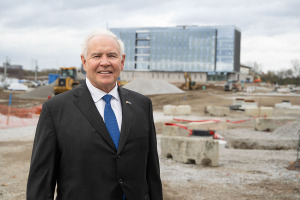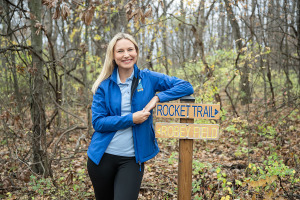
Indiana has the juice to fuel surge in data centers
When it comes to large-scale data center activity, the Hoosier state has gone from what feels like zero to 60 in a little over a year.

When it comes to large-scale data center activity, the Hoosier state has gone from what feels like zero to 60 in a little over a year.
Since his Jan. 20 inauguration, the new president has fired off a flurry of executive orders and immigration-related announcements.

Leaders for the town, a suburban enclave of just under 3 square miles that straddles the line between Marion and Hancock counties, want to separate from Indianapolis government.

Although the White House’s planned federal funding freeze was temporarily paused by a judge late Tuesday afternoon and rescinded Wednesday, it’s already delaying some central Indiana-based projects.

The state has for several years been moving toward competitive integrated employment, in which people with disabilities work alongside non-disabled people for the same wages and benefits.

There’s been little public movement on the pursuit of a Major League Soccer club since the city last August asked the state to create a new taxing district to pay for a soccer-specific stadium.

Many of Indiana’s largest law firms find it imperative to offer government lobbying for their clients in order to provide a full line of services, especially true in Indianapolis, home to all of state government and the Legislature.

Republican Ohio Gov. Mike DeWine said it is the largest single job-creation and payroll project that Ohio has ever announced.

IRS Commissioner Daniel Werfel said the agency is seeing higher numbers of theft victims overall since before the pandemic, in part because scammers are increasingly moving to online schemes.

Heading into a packed legislative session at the Indiana Statehouse, the Indy Chamber plans to focus its lobbying efforts on quality-of-place and human resources issues.

The promised investment feeds into an existing boom for constructing data centers used in the development of artificial intelligence and expansion of cryptocurrency.

Health care-centric lobbying firm KWK Management Group merged with the wide-ranging 1816 Public Affairs Group at the start of the year, the companies announced Tuesday.

The state has spent more than $690 million so far establishing the LEAP Research and Innovation District. Outgoing economic leaders say the project is a huge success, but some political leaders are cautious.

Holcomb’s administration has focused its economic strategy on courting new companies and investing in those already here.

Incoming President Donald Trump’s pledge to impose tariffs on goods from Canada and Mexico has caught the attention of Indiana companies, which stand to experience a significant impact if new or expanded tariffs are imposed.

The plan is meant to streamline discussions among the city, existing businesses and companies considering Indianapolis for expansion or relocation.

The city is preparing to break ground in the next few months, but some housing-first advocates say the shelter doesn’t further the housing-first goal because it won’t include permanent-housing options.

Allowing each councilor to choose an improvement project is part of an initiative by Mayor Joe Hogsett’s administration to invest in roads, parks and dangerous intersections throughout Marion County.
Comments about the CHIPS and Science Act by President-elect Donald Trump and U.S. House Speaker Mike Johnson before the election have raised questions about whether the president and Congress are fully committed to the law that Indiana is deeply invested in.

The new fee is intended to encourage industry to adopt best practices that reduce emissions of methane—the primary component of natural gas—and thereby avoid paying.